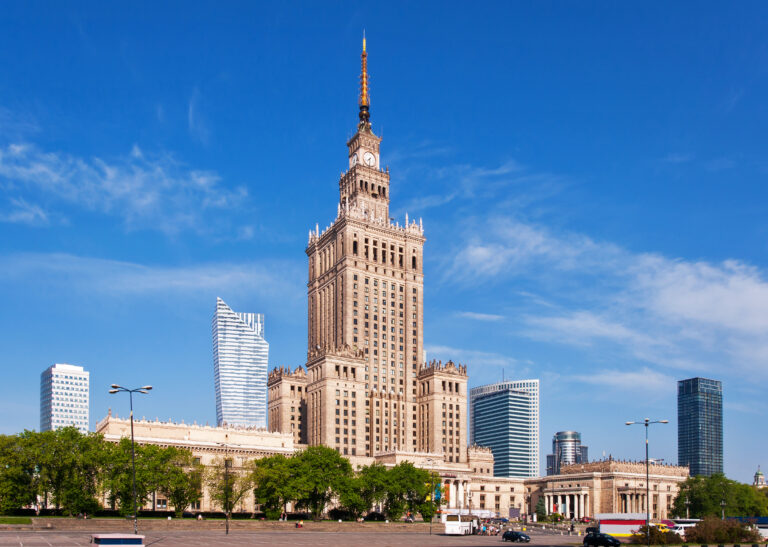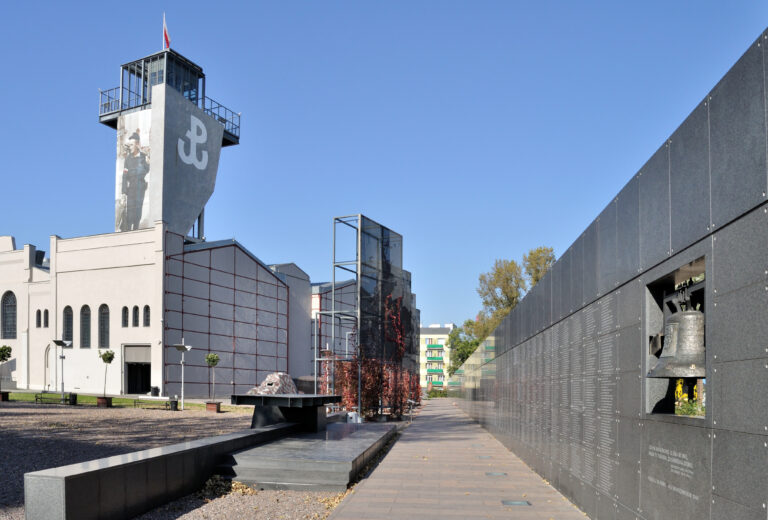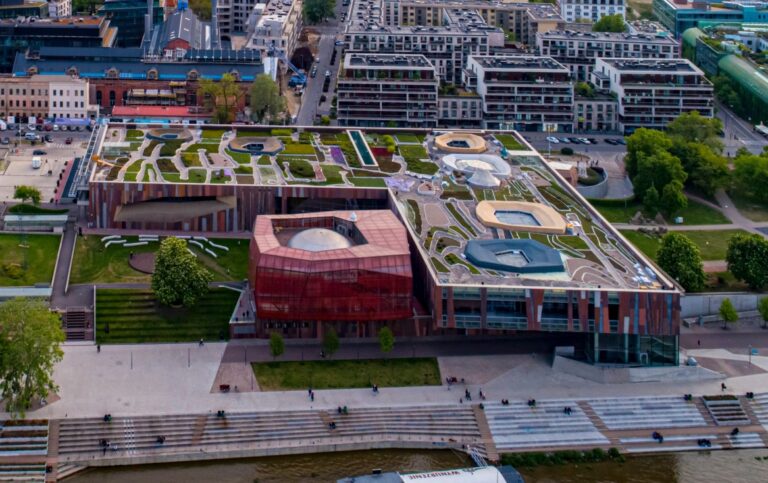Royal Lazienki Museum

How to get to Royal Lazienki Museum
If you plan to drive to Łazienki Królewskie, consider parking on Myśliwiecka Street, where you’ll find parking spots right behind the bus stop, extending all the way to the Legia Stadium.
Additional parking options are available on Szwoleżerów Street. If these streets are full, you can try finding a spot on nearby side streets.
When traveling by car, it’s best to take Ujazdowskie Avenue, which leads directly to the vicinity of Łazienki Królewskie.
Be sure to pay attention to road signs and parking meters to avoid fines.
Łazienki Królewskie in Warsaw are easily accessible by public transport:
- Bus lines stopping nearby include: 116, 166, 180, 195, and 503.
- Nearby stops: “Agrykola,” “Łazienki Królewskie,” and “Pl. Na Rozdrożu.”
- You can check the timetable at www.jakdojade.pl.
For visitors to Łazienki Królewskie, traveling by taxi is a convenient transport option. Drivers from services like FreeNow, Uber, or Bolt (Taxify) can take you directly to a chosen location near the park, such as the main entrance or a nearby drop-off point.
What exhibitions will you see in Royal Lazienki Museum
The Palace on the Island is one of the most iconic buildings in Łazienki Królewskie. Built between 1775 and 1795, based on a design by Dominik Merlini, the palace served as the summer residence of King Stanisław August Poniatowski.
It is one of the most representative monuments of Polish architecture, now functioning as a museum. While exploring the Palace on the Island, visitors can admire a rich collection of artworks, furniture, and decorations, reflecting the taste and lifestyle of the Polish court in the 18th century. The palace interiors have been carefully restored to preserve their historical charm.
Guests can also explore salons and galleries displaying paintings by renowned artists, sculptures, porcelain, and everyday objects from the era. This remarkable site not only unveils the grandeur of royal and courtly life but also immerses visitors in the historical ambiance of Poland’s past.
The Amphitheater in Łazienki Królewskie is not only an architectural monument but also a unique cultural venue that is worth visiting during your stay in Warsaw. Located in the picturesque surroundings of the English gardens, the Amphitheater is a true gem of 18th-century theatrical architecture.
Designed by Domenico Merlini, this elegant theater once served as a meeting place for Warsaw’s elites, where theatrical performances, concerts, and musical events took place. Today, the Amphitheater continues its tradition as a stage for summer cultural events. During your visit, you can admire its carefully restored architecture, preserved with great attention to historical details.
At the Royal Łazienki, you can admire both permanent and temporary exhibitions that offer a wealth of artworks and historical artifacts.
Permanent Exhibitions:
- Sculpture Gallery
- Painting Gallery
- Graphic Arts Gallery
- Royal Picture Gallery on the Time Axis
Temporary Exhibitions:
- “The Art of Good Thinking. The Heritage of Stanisław Herakliusz Lubomirski” – April 26 – September 1, 2024
Royal Lazienki Museum Google reviews:
Touring Royal Lazienki Museum with children
The park avenues are wide and flat, making it easier for people with limited mobility and families with children to move around.
In places such as the Myślewicki Palace or the Old Orangery, there is a button that allows you to call staff for assistance in entering the building. Inside the buildings, there are elevators, and the restrooms are equipped with changing tables for babies.
The Palace on the Island is accessible via stairs and a wheelchair ramp, and the doors are wide and threshold-free.
Łazienki Królewskie to rozległy teren, który zapewnia mnóstwo miejsca do zabawy na świeżym powietrzu. Dzieci mogą biegać, odkrywać przyrodę, a także cieszyć się widokiem pięknych ogrodów, stawów i alei.
Park oferuje przestrzeń do aktywności na świeżym powietrzu oraz edukacyjne programy, które zainteresują zarówno młodszych, jak i starszych odwiedzających.
Łazienki Królewskie oferują wiele atrakcji również dla młodzieży w wieku od 14 do 18 lat. Młodsze pokolenie może zwiedzać Pałac na Wyspie oraz inne historyczne budowle, zgłębiając wiedzę na temat historii Polski i architektury. Młodzież może także podziwiać piękne ogrody i spacerować po malowniczych alejach. Amfiteatr w Łazienkach Królewskich regularnie organizuje koncerty, spektakle teatralne i inne wydarzenia kulturalne, które stanowią świetną okazję do włączenia się w życie kulturalne i artystyczne.
Frequently Asked Questions
- Royal Lazienki Museum Gardens – 06:00 AM – 10:00 PM
- PALACE ON THE ISLAND
Tuesday-Wednesday: 10:00 AM – 5:00 PM
Thursday-Friday: 10:00 AM – 6:00 PM
Saturday: 12:00 PM – 8:00 PM
Sunday: 10:00 AM – 4:00 PM - OLD ORANGERY AND ROYAL THEATRE
Tuesday-Wednesday: 10:00 AM – 5:00 PM
Thursday-Friday: 10:00 AM – 6:00 PM
Saturday: 12:00 PM – 8:00 PM
Sunday: 10:00 AM – 4:00 PM - HUNTING PALACE
Tuesday-Wednesday: 10:00 AM – 5:00 PM
Thursday-Friday: 10:00 AM – 6:00 PM
Saturday: 12:00 PM – 8:00 PM
Sunday: 10:00 AM – 4:00 PMMore on Opening Hours | Royal Lazienki (lazienki-krolewskie.pl)
Entry to the Royal Lazienki Gardens is free of charge.
Tickets are required for the historic sites within the Royal Lazienki grounds, such as Podchorążówka, the Old Orangery, and the Palace on the Isle.
Friday is a free entry day for individual visits.
Yes, most of the ticket counters accept credit card payments.
Yes, the Royal Lazienki are adapted to the needs of people using wheelchairs. There are special facilities such as elevators and restrooms accessible for disabled individuals.
Yes, there are restaurants, cafes, and picnic areas within the Royal Lazienki. You can also bring your own picnic and enjoy it in designated areas.
The Belvedere Restaurant is located in the New Orangery.
Yes, photography is allowed in the Royal Lazienki. However, there may be restrictions in some museum interiors, so it is advisable to check before starting to take photos.
The time needed to visit the Royal Lazienki depends on individual preferences and interests. Exploring the park and the main buildings can take anywhere from one to several hours.
The Royal Lazienki are located along Ujazdowskie Avenues. Here are the suggested entrances: one near Belvedere, another close to the Chopin Monument, and a third near the Botanical Garden of the University of Warsaw. An additional entrance is available from Parkowa Street, near the parking lot for Belvedere restaurant customers. Another entrance can be found on the Gagarina Street side.
The Royal Lazienki are located at:
Al. Ujazdowskie 1, 00-461 Warsaw, Poland.
Royal Lazienki Museum
The Royal Baths in Warsaw are not only a palace and garden complex, but also a true historical and cultural gem, with roots dating back to the 18th century when they were founded by Stanisław August Poniatowski. The name “Łazienki” comes from the Baroque pavilion of the Bathhouse, which was transformed into a royal summer residence. The park covers about 76 hectares, offering picturesque gardens, numerous pavilions, and historic buildings.
The history of the Royal Baths is linked to various periods and events that shaped not only their architecture but also their character. From its inception, through the era of partitions and partitions of Poland, to modern times, Łazienki have witnessed many key moments in Polish history. During the time of Stanisław August, they served a representative and cultural function, being a meeting place for artistic and intellectual elites.
Today, the Royal Baths are not just a place for walks among green alleys. They are also home to rich museum collections, such as the Sculpture Gallery, the Picture Gallery, and the Royal Picture Gallery on the Timeline. Permanent and temporary exhibitions present works of art from antiquity to the contemporary period, reflecting the diversity and richness of Polish and European cultural heritage.
The Royal Baths are an extraordinary place that continues to live with history, culture, and art. For anyone seeking inspiration, relaxation, or a deeper understanding of national heritage, it is an essential stop on the map of travel in Poland.






